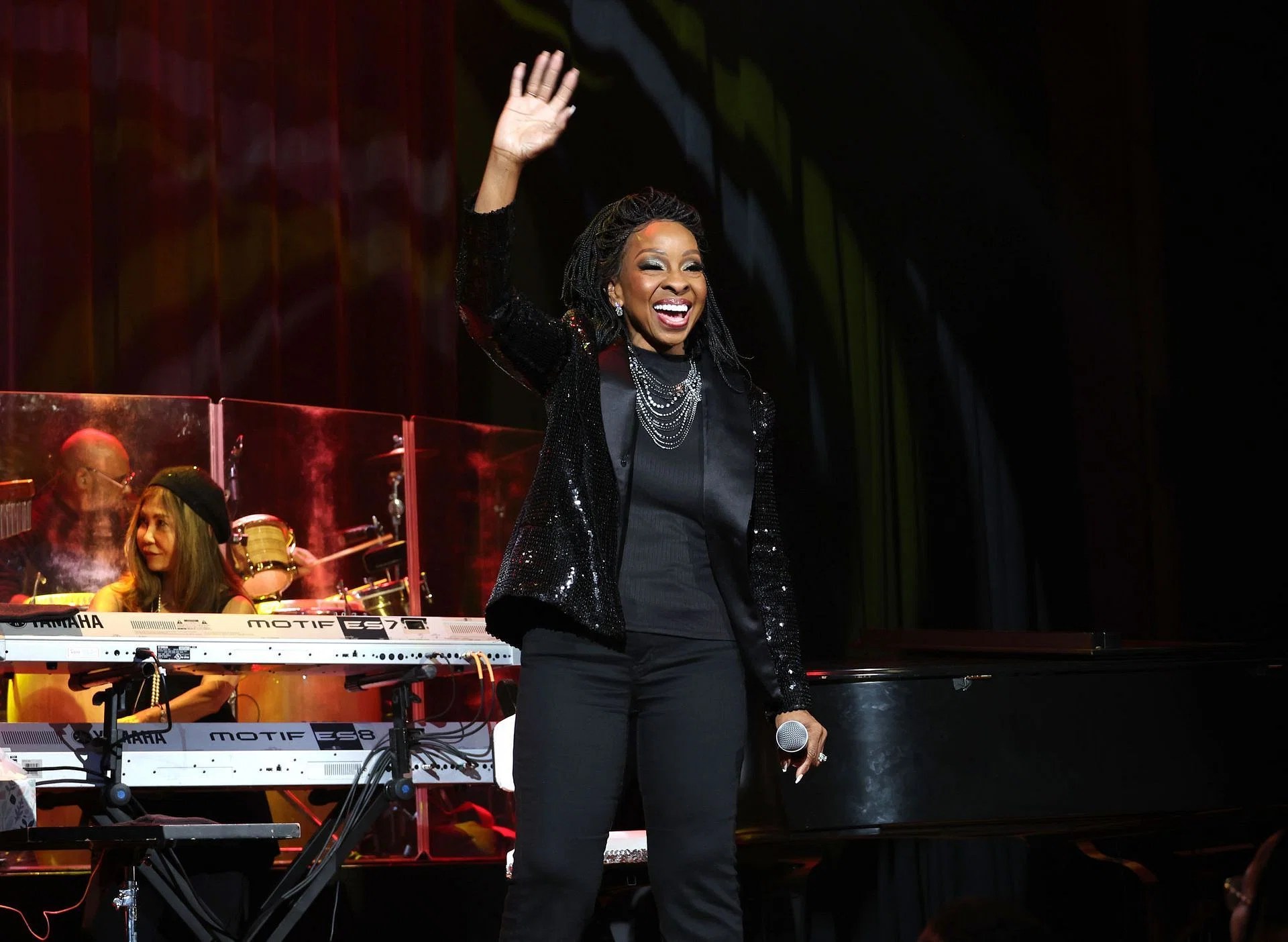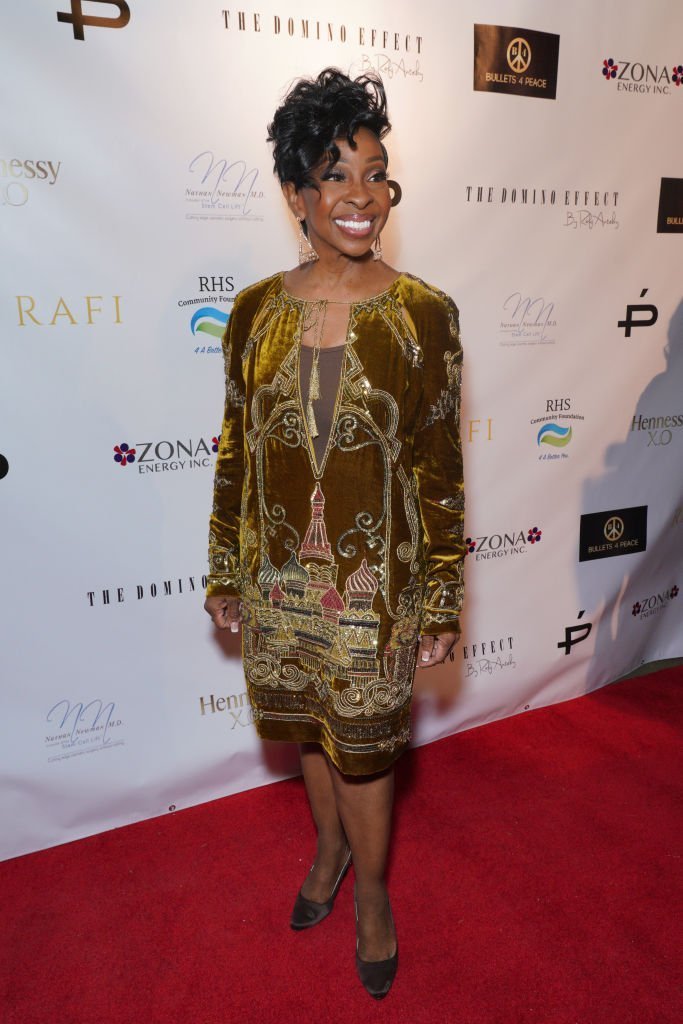"Did Gladys Knight Die" refers to the false information that legendary singer Gladys Knight had passed away. This misinformation spread rapidly online, causing concern and confusion among her fans and the general public.
Fortunately, the rumors were quickly debunked by Knight's representatives, who confirmed that she was alive and well. The spread of false information highlights the importance of verifying news and information from credible sources to avoid unnecessary distress or panic.
Gladys Knight is an iconic figure in the music industry, renowned for her powerful vocals and timeless hits such as "Midnight Train to Georgia" and "I Heard It Through the Grapevine." Her enduring legacy and continued presence in the entertainment world make her a beloved figure, and any news regarding her well-being naturally garners significant attention.
did gladys knight die
The false information surrounding the death of Gladys Knight highlights the importance of understanding the different aspects related to such news, including:
- Verification: Confirming the authenticity of information through credible sources.
- Source: Identifying the origin of the information to assess its reliability.
- Context: Understanding the circumstances surrounding the news to determine its validity.
- Impact: Recognizing the potential consequences of spreading false information.
- Celebrity Status: Considering how public figures are often targets of false death rumors.
- Social Media: Acknowledging the role of social media in amplifying misinformation.
- Mental Health: Understanding the emotional distress caused by false death reports.
- Legacy: Recognizing the importance of protecting the reputation and legacy of public figures.
These aspects underscore the need for critical thinking, responsible news consumption, and empathy in the digital age. By examining the details and implications of false death rumors, we can better equip ourselves to navigate the complexities of online information.
| Name | Birth Date | Occupation |
|---|---|---|
| Gladys Knight | May 28, 1944 | Singer, songwriter, actress |
Verification
In the case of the false death rumors surrounding Gladys Knight, verification played a crucial role in debunking the misinformation and restoring accuracy.
- Fact-Checking: Reputable news organizations and fact-checking websites examined the claims and found no credible evidence to support them.
- Official Statements: Gladys Knight's representatives and family members publicly denied the rumors, confirming that she was alive and well.
- Social Media Verification: Official social media accounts associated with Gladys Knight remained active, with no announcements or tributes suggesting her passing.
- Absence of Obituaries: No reputable news sources or obituaries reported Gladys Knight's death, further discrediting the rumors.
By verifying the information through these credible sources, the false rumors were effectively dispelled, preventing unnecessary distress and confusion among the public.
Source
In the case of the "did Gladys Knight die" misinformation, identifying the origin of the information was crucial for assessing its reliability. The false rumors originated from an obscure and unreliable website known for spreading hoaxes and sensationalized content.
Tracing the source of the information allowed fact-checkers and journalists to determine that it lacked credibility and should not be taken seriously. By examining the website's history and reputation, they could discredit the information and prevent its further spread.
This highlights the importance of assessing the source of information, especially in the digital age where misinformation can spread rapidly through social media and other online platforms. Understanding the origin of the information helps us evaluate its credibility and make informed decisions about whether or not to trust it.
Context
In the case of the "did Gladys Knight die" misinformation, understanding the context was crucial for determining its validity.
- Timing: The rumors surfaced around the time of Gladys Knight's 78th birthday, a period when hoaxes and false celebrity death reports are more common.
- Lack of credible sources: No reputable news organizations or official sources reported Gladys Knight's death, raising doubts about the validity of the rumors.
- Sensational headlines: The website that originated the rumors used sensational headlines and language to attract attention, a common tactic employed by unreliable sources.
- Absence of supporting evidence: The rumors lacked any concrete evidence, such as statements from family members, medical records, or official announcements.
By examining the context surrounding the rumors, fact-checkers and journalists were able to identify red flags that indicated the information was likely false. This highlights the importance of considering the context when evaluating the validity of news and information.
Impact
The impact of spreading false information can be significant, as demonstrated by the "did Gladys Knight die" misinformation. False celebrity death rumors can cause emotional distress and confusion among fans and the general public, particularly those who are close to the individual in question. In the case of Gladys Knight, her loved ones and colleagues were subjected to unnecessary worry and concern due to the false rumors.
Moreover, the spread of false information can damage reputations and legacies. If the rumors about Gladys Knight had persisted, it could have tarnished her image and overshadowed her remarkable achievements in the music industry. False information can also erode trust in credible news sources and make it more difficult for the public to discern accurate information from false.
Recognizing the potential consequences of spreading false information is crucial for responsible news consumption and social media engagement. It is essential to verify information from credible sources and be mindful of the potential impact before sharing or amplifying it. By doing so, we can help maintain a well-informed society and protect the reputations and well-being of public figures like Gladys Knight.
Celebrity Status
The "did Gladys Knight die" misinformation highlights the connection between celebrity status and the prevalence of false death rumors. Public figures like Gladys Knight are often targets of such rumors due to several factors:
- Public Interest: Celebrities are constantly in the public eye, and their lives are closely followed by fans and media outlets. This attention can make them more susceptible to rumors and misinformation.
- Hoax Culture: False celebrity death rumors have become a somewhat common occurrence, often spread through social media and other online platforms. This trend can contribute to the perpetuation of such rumors, even when they lack any factual basis.
- Sensationalism: False celebrity death rumors can generate clicks and attract attention, which can incentivize unreliable sources to spread them. The sensational nature of such rumors can also make them more believable to the general public.
- Lack of Verification: In the fast-paced world of social media, information can spread rapidly without proper verification. This can lead to the dissemination of false rumors before they can be debunked.
The case of Gladys Knight demonstrates how false death rumors can impact celebrities and their loved ones. It also underscores the importance of critical thinking, responsible news consumption, and the need for credible sources of information in the digital age.
Social Media
The "did Gladys Knight die" misinformation highlights the significant role of social media in amplifying and spreading false information. Social media platforms provide a fertile ground for the dissemination of rumors and hoaxes due to their vast reach, user-generated content, and rapid information sharing capabilities.
- Rapid Dissemination: In the case of Gladys Knight, the false rumors spread quickly through social media platforms, reaching a wide audience within a short period. The immediacy and virality of social media can contribute to the rapid amplification of misinformation.
- Lack of Gatekeeping: Unlike traditional media outlets, social media platforms often lack the editorial gatekeeping processes that help verify and filter information. This can allow false rumors to spread unchecked, potentially reaching a larger audience than accurate information.
- Echo Chambers and Confirmation Bias: Social media algorithms can create echo chambers where users are exposed to content that aligns with their existing beliefs and biases. This can lead to the reinforcement and amplification of false information, as users are more likely to engage with and share content that confirms their existing views.
- Sensationalism and Clickbait: False celebrity death rumors often have sensational headlines and eye-catching content designed to attract clicks and engagement. This can incentivize users to share such content, even if they have not verified its accuracy.
The "did Gladys Knight die" misinformation demonstrates the challenges posed by social media in the fight against false information. It underscores the need for critical thinking, media literacy, and the importance of relying on credible sources for accurate information.
Mental Health
The "did Gladys Knight die" misinformation highlights the importance of considering the mental health impact of false death reports. Such rumors can cause emotional distress and psychological harm to the individuals affected and their loved ones.
False death reports can trigger intense feelings of grief, anxiety, and uncertainty. When individuals are led to believe that a loved one has passed away, they may experience a range of emotions such as shock, disbelief, and profound sadness. The sudden and unexpected nature of the news can make it difficult to process and cope with the emotional turmoil.
In the case of Gladys Knight, the false rumors about her death caused concern and distress among her fans, friends, and family members. They were forced to grapple with the emotional rollercoaster of hearing about her supposed passing and then learning that she was alive and well. The spread of false information can create unnecessary emotional turmoil and strain relationships.
It is crucial to be mindful of the potential mental health impact of false death reports and to approach such information with caution. Verifying information from credible sources and refraining from amplifying unconfirmed rumors can help mitigate the emotional distress caused by misinformation.
Legacy
The "did Gladys Knight die" misinformation highlights the crucial connection between false celebrity death rumors and the preservation of their legacy. Public figures, like Gladys Knight, have spent years cultivating their careers and building a positive reputation. False death reports can tarnish this legacy and overshadow their accomplishments.
In Gladys Knight's case, her legacy as a legendary singer and entertainer could have been compromised if the false rumors had persisted. Her reputation for professionalism, grace, and musical excellence could have been damaged, potentially affecting her future career prospects and public perception.
Protecting the reputation and legacy of public figures is essential for preserving the integrity of their work and the impact they have on society. False death reports can erode trust and make it difficult for the public to separate fact from fiction. By verifying information from credible sources and refraining from amplifying unconfirmed rumors, we can help safeguard the legacies of our cherished public figures.
FAQs about Gladys Knight Death Rumors
Following the false rumors about Gladys Knight's death, several questions and concerns have arisen. This section addresses some of the most common FAQs to provide clarity and accurate information.
Question 1: Is Gladys Knight really dead?
Answer: No, Gladys Knight is not dead. The rumors about her death are false and have been debunked by her representatives and official sources.
Question 2: Where did the rumors originate?
Answer: The false rumors originated from an unreliable website known for spreading hoaxes and sensationalized content.
Question 3: Why do false celebrity death rumors occur?
Answer: False celebrity death rumors can occur for various reasons, including the desire for attention, the spread of hoaxes, or the misunderstanding of genuine news.
Question 4: How can we prevent the spread of false information?
Answer: To prevent the spread of false information, it is crucial to verify information from credible sources, be mindful of sensational headlines, and avoid sharing unconfirmed rumors.
Question 5: What impact do false death rumors have?
Answer: False death rumors can cause emotional distress to the individuals affected and their loved ones, damage reputations, and erode trust in credible news sources.
Question 6: How can we support Gladys Knight and her family?
Answer: We can support Gladys Knight and her family by dismissing the false rumors, sending messages of support, and respecting their privacy during this time.
Remember, it is essential to rely on credible sources for accurate information and to be mindful of the potential harm caused by spreading unverified rumors.
Tips to Combat Misinformation about Celebrity Deaths
The false rumors surrounding Gladys Knight's death highlight the need for caution and critical thinking when encountering information about celebrity deaths. Here are some tips to help combat the spread of misinformation:
Tip 1: Verify the Source
Before sharing or believing information about a celebrity's death, check the source. Is it a reputable news organization or a website known for spreading hoaxes? If the source is unreliable, it's best to be skeptical.
Tip 2: Look for Multiple Confirmations
Don't rely on a single source. Check if other credible news outlets are reporting the same information. If multiple reputable sources confirm the news, it's more likely to be accurate.
Tip 3: Be Wary of Sensational Headlines
Sensational headlines are designed to grab attention and may not always be accurate. Be cautious of headlines that use exaggerated or emotionally charged language.
Tip 4: Check Social Media
While social media can be a source of information, it's important to be mindful of the potential for false information to spread quickly. Verify any information you see on social media through credible sources.
Tip 5: Report False Information
If you encounter false information about a celebrity's death, report it to the platform or website where you found it. Reporting false information helps prevent its spread and protects others from being misled.
Summary:
By following these tips, you can help combat the spread of misinformation about celebrity deaths and ensure that the information you share is accurate and reliable.
Conclusion
The "did Gladys Knight die" misinformation highlights the prevalence of false celebrity death rumors and underscores the importance of critical thinking and media literacy in the digital age. To combat the spread of misinformation, it is crucial to rely on credible sources, verify information, and be mindful of the potential harm caused by amplifying unconfirmed rumors.
The legacy and reputation of public figures like Gladys Knight should be protected against unfounded rumors. By promoting accurate information and supporting responsible news consumption, we can ensure that the contributions and achievements of our cherished celebrities are preserved and celebrated.
Discover Aviation Safety And Pilot Expertise: Decoding The "Air Astana 2004 Footage"
Unveiling The Creative Dynamics And Supportive Bond Behind "sarah Sherman Partner"
Discover The Secrets Behind Paula Newsome's Iconic Walk



ncG1vNJzZmifpaKupbHNoGWsa16qwG7DxKyrZmpelrqixs6nmLCrXpi8rnvDoptmn5yWsbq%2FjKSlop%2BYqXqltcRnn62lnA%3D%3D